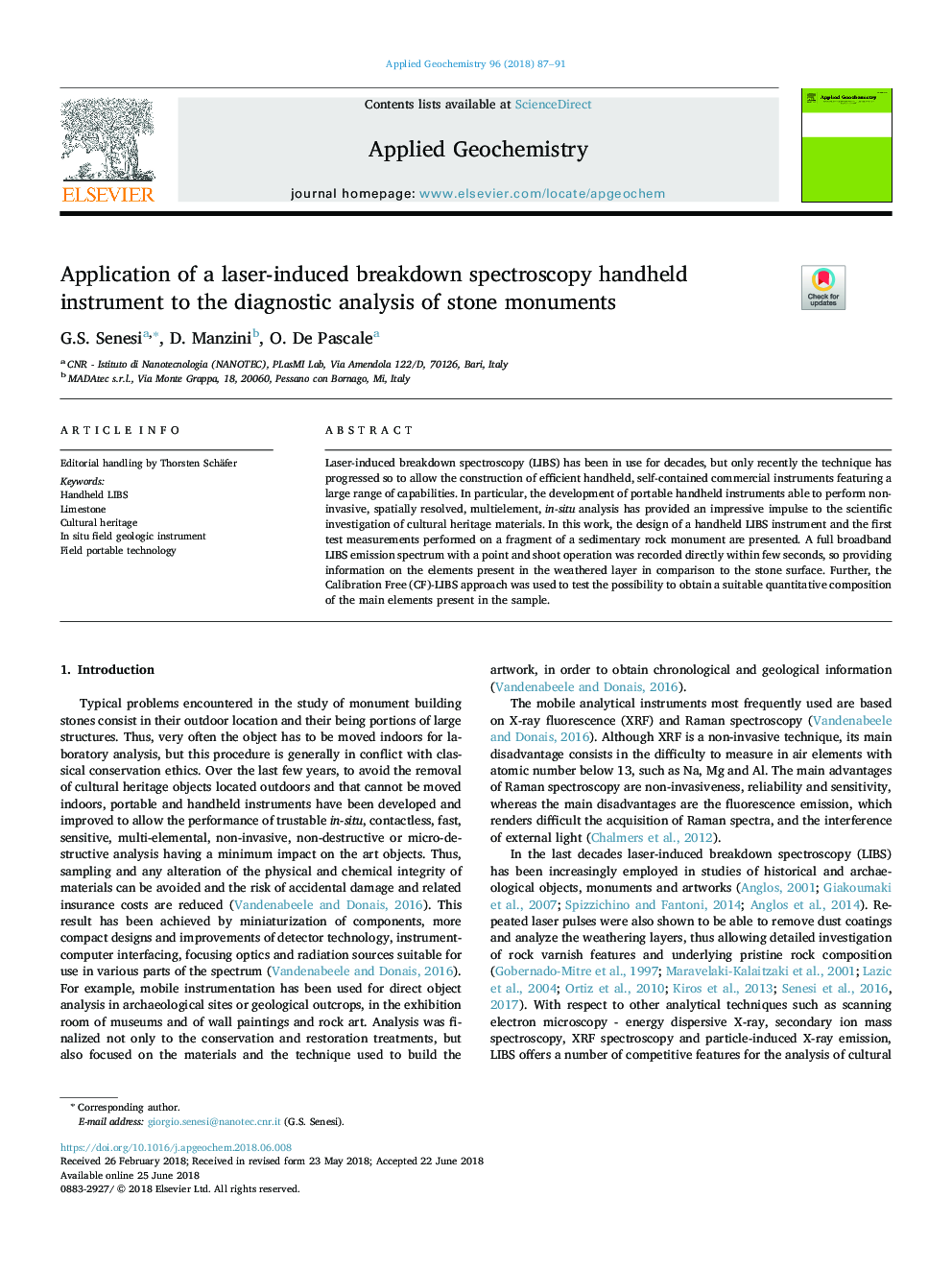| Article ID | Journal | Published Year | Pages | File Type |
|---|---|---|---|---|
| 8863032 | Applied Geochemistry | 2018 | 5 Pages |
Abstract
Laser-induced breakdown spectroscopy (LIBS) has been in use for decades, but only recently the technique has progressed so to allow the construction of efficient handheld, self-contained commercial instruments featuring a large range of capabilities. In particular, the development of portable handheld instruments able to perform non-invasive, spatially resolved, multielement, in-situ analysis has provided an impressive impulse to the scientific investigation of cultural heritage materials. In this work, the design of a handheld LIBS instrument and the first test measurements performed on a fragment of a sedimentary rock monument are presented. A full broadband LIBS emission spectrum with a point and shoot operation was recorded directly within few seconds, so providing information on the elements present in the weathered layer in comparison to the stone surface. Further, the Calibration Free (CF)-LIBS approach was used to test the possibility to obtain a suitable quantitative composition of the main elements present in the sample.
Keywords
Related Topics
Physical Sciences and Engineering
Earth and Planetary Sciences
Geochemistry and Petrology
Authors
G.S. Senesi, D. Manzini, O. De Pascale,
